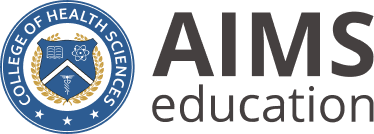Paying off Student Loans with a Career in Healthcare
May 28, 2014
Some fields might be more of a risk than others. However, with the right mindset, tools, experience, and support network, a graduate can land a job with almost any major. Some programs of study just make it a little bit easier. Even if your first job out of college is as a barista at a local coffeehouse, income-based repayment can help keep the costs associated with federal loans in check. Just remember to keep looking for employment in your field and stay in touch with career specialists who can help you lobby for a better position.
Let’s take a more specific look at what it’s like to pay off loans with a career in Allied Health. The first thing to consider is the length of your program. The average length for a program in Diagnostic Medical Sonography, for example, is around two years. The amount of debt you’d need to accumulate to complete your education depends on a number of factors including your savings, financial aid eligibility, and whether or not you’re able to work while going to school
If you’re not sure how much money in student loans you'll need to take out, speak with a financial aid representative at the school you’re attending or considering attending. For the sake of this article, we’ll assume that you need to take out about $21,000. Using the loan repayment calculator at FinAid.org, we see that they project that our payments will be about $211 per month, based on the current federal subsidized loan interest rate of 3.86% and a ten-year repayment plan, and further recommend that, based on that amount, the borrower should earn at least $25,346.

Is it possible to pay off the debt of student loans?
Image Source:FreeDigitalPhotos.net
As students begin their college education, they realize that they’re engaging in a type of gamble. Like anything that involves going into debt, there’s some risk involved in taking the next steps with our education and our careers. Financing college is tough, and student loans are usually necessary. Be sure to seek help and adviceas you plan your future financially. A lot of other people have been in your place and are willing to give you advice. Be sure to listen!

Student Debt is a major crisis, but some academic pathways still lead to higher-paying jobs.
Working in public health, you might qualify for Public Service Loan Forgiveness. This is a government initiative that helps employees working for nonprofits and other public service sectors erase their debt after 10 years, as long as regular payments are made in that time. To learn more, visit the Federal Student Aid website, since there are stipulations and other qualifications that must be accomplished before loan forgiveness is considered.

With a solid plan and guidance, you will successfully navigate post-graduate life.
Kit / Wikimedia Commons / CC BY
The median salary for the Diagnostic Medical Sonographer position is $60,350 per year, according to the US Bureau of Labor Statistics. If you take a look at the average salaries for some of the other positions in allied health, it is clear that the type of employment you’ll be qualified to take on is most likely going to leave you with enough to comfortably pay off your student debt.
The benefit of going to a trade school or technical school is that the cost for most career training programs is often in line with the potential earnings for that particular career. A career as a Phlebotomy Technician may not pay as much as an MRI Technologist, but you can complete your phlebotomy training in less than 1 month and pay significantly than an MRI student would pay. MRI students, on the other hand, may be paying a lot more for their education, but their future earning potential will be significantly higher than a phlebotomist. Unfortunately for many college students, the same principle does not hold true. For example, the cost for a degree in Theater is just as expensive as a degree in Computer Science.

